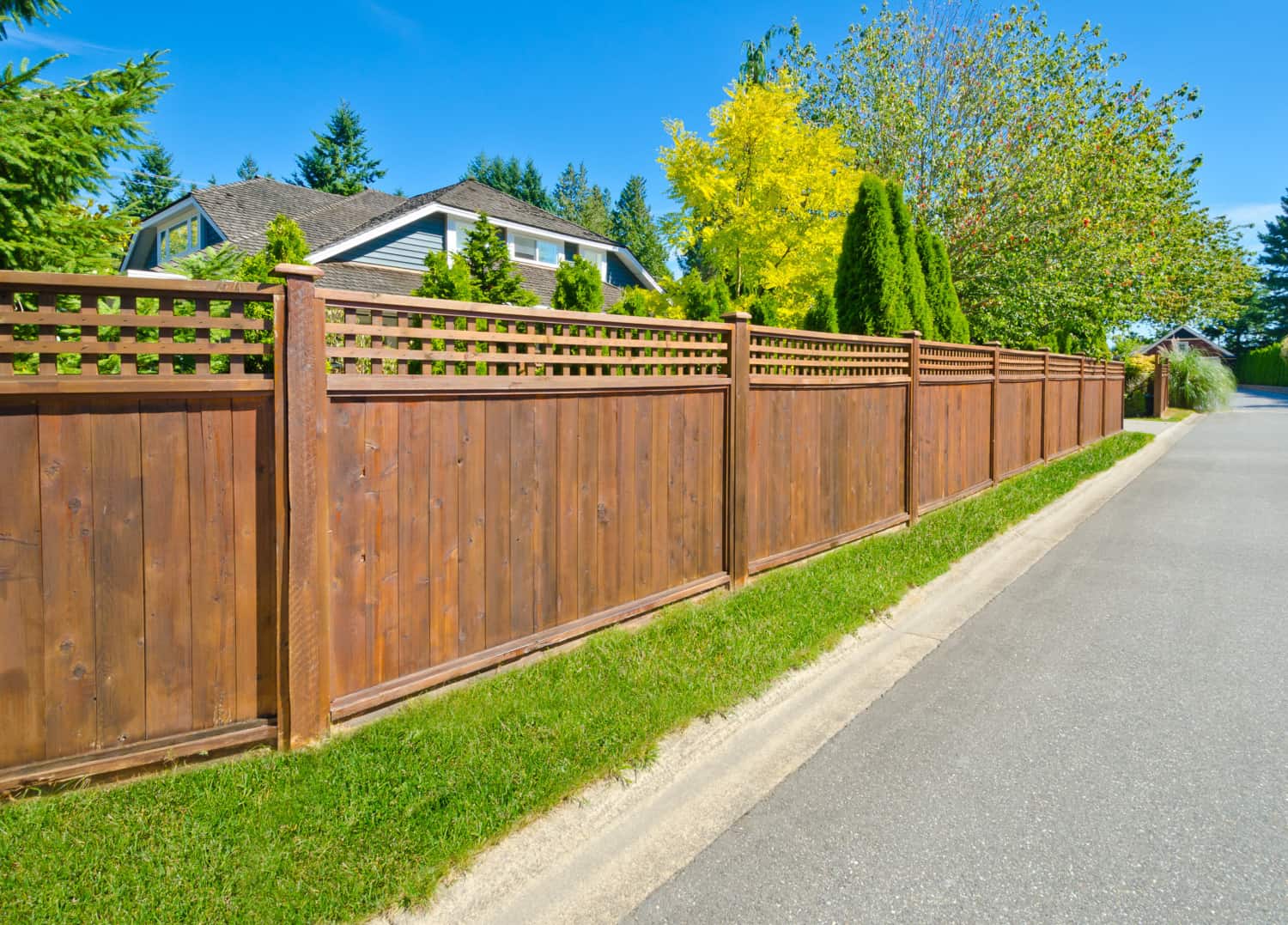All Categories
Featured

Your fence is an essential component of your property, offering visual, security, and personal privacy charm. There are a number of strategies you can apply to shield your fencing and extend its life.
- Choose the Right Material. The first step in safeguarding your fence from weather-related damage is to choose the best material for your environment. Some materials are a lot more immune to the aspects than others.
Wood Fences: While conventional wood fences offer a natural, attractive appearance, they are especially susceptible to water insect, rot, and damages infestation. Such as cedar or redwood if you pick wood, pick pressure-treated lumber or wood types that are more immune to wetness. Plastic Fencings: Plastic is a low-maintenance alternative that resists fading, splitting, and warping. It's likewise immune to rot and parasites, making it perfect for locations with high humidity or direct exposure to rain. Steel Fences: Aluminum and functioned iron fences are durable and immune to weathering. Nonetheless, they can rust if exposed to moisture for extensive periods. Go with a powder-coated or galvanized steel fence to reduce the danger of rust. Compound Fences: These are made from a mix of wood fibers and plastic, supplying the most effective of both globes-- toughness and an all-natural look. Compound fences are immune to moisture, fading, and deteriorating, making them fantastic for climates with frequent rainfall or snow. 2. Apply Protective Coatings. No matter the product, using a protective finishing can assist guard your fence from weather damage.

Wood Fencings: A good-quality discolor or sealant can help protect your wood fencing from moisture, UV rays, and bugs. These coverings develop an obstacle that avoids water from leaking right into the timber and causing rot. You need to use a fresh layer of sealer every pair or discolor of years, depending upon your climate and the degree of direct exposure to rain and sunshine. Plastic Fencings: Although plastic fencings are generally immune to weathering, they can still experience discoloration as a result of the sun's UV rays. You can utilize specific vinyl cleaners or UV protectants to preserve the shade and appearance of your fence. Steel Fences: For steel fencings, consider using a rust-resistant primer and a layer of paint made for exterior use. Powder covering is another superb alternative for steel fencings, as it creates a resilient, weather-resistant coating that resists rust and rust. 3. Normal Cleaning and Maintenance. Preserving your fence routinely is vital to preventing damages from the elements. Dirt, leaves, and various other debris can accumulate on your fence, which can trigger discoloration, mold, and mildew gradually.
Wooden Fences: Clean your wood fencing every six months with a moderate cleaning agent option or a stress washing machine (on a reduced setup) to eliminate dirt and gunk. Keep an eye out for early indications of rot, specifically at the base of the fencing messages where dampness often tends to collect. Plastic Fences: Vinyl fencings are easy to clean with soap and water. If you observe mold and mildew or mold, use a blend of vinegar and water to carefully scrub the influenced locations. Stay clear of harsh chemicals that might harm the surface. Metal Fences: Frequently tidy metal fences with a soft towel or sponge to get rid of rust-causing debris. For wrought iron fencings, think about applying a rust-inhibiting item to stop corrosion. 4. Appropriate Setup and Positioning. Correct installment of your fence can go a lengthy way in shielding it from weather-related damages. Guarantee that your fencing is firmly anchored which blog posts are established deep sufficient right into the ground to prevent shifting throughout heavy winds or storms. Setting up bracing at crucial factors can supply extra assistance. if your fencing is subject to hefty winds.
Furthermore, take into consideration the positioning of your fencing. When possible, plant shrubs or trees tactically around your fence to supply some all-natural protection from extreme winds, extreme sunlight, or motoring rain. Be mindful not to plant too close to the fencing, as origins can harm or change messages over time.
- Address Tornado Damage Quickly. Tornados, specifically those with high winds or hail storm, can cause immediate damage to your fencing. After a storm, evaluate your fencing for damaged sections, leaning articles, or dropped particles. Dealing with damage promptly can prevent more concerns down the line. If you notice minor damages, such as tiny cracks or loosened panels, repair them today to stop water from leaking in and triggering much more comprehensive damages.
- Winterize Your Fencing. Cold temperature levels and ice can be particularly harming to wood fences. To prevent this, make sure that the base of your fencing messages is raised and not sitting in pooled water.
Final thought. Weather-related damages is an unpreventable component of owning a fencing, yet with the appropriate preventative measures and normal maintenance, you can dramatically extend the life of your fencing. Choose sturdy materials fit for your climate, apply safety finishes, tidy regularly, and guarantee correct installment. With these actions, you can secure your fencing from the elements and maintain its look and performance for years ahead.
Latest Posts
Laminate Floor Covering: Style Satisfies Durability at Carpet Interiors Floor & Home
Published Apr 19, 25
2 min read
Your Neighborhood Flooring Professionals in Orland Park, IL
Published Apr 19, 25
1 min read
Full Circle Strategic Marketing - Crush Google Rankings with Battle-Tested Search Engine Strategies
Published Apr 19, 25
2 min read
More
Latest Posts
Laminate Floor Covering: Style Satisfies Durability at Carpet Interiors Floor & Home
Published Apr 19, 25
2 min read
Your Neighborhood Flooring Professionals in Orland Park, IL
Published Apr 19, 25
1 min read
Full Circle Strategic Marketing - Crush Google Rankings with Battle-Tested Search Engine Strategies
Published Apr 19, 25
2 min read